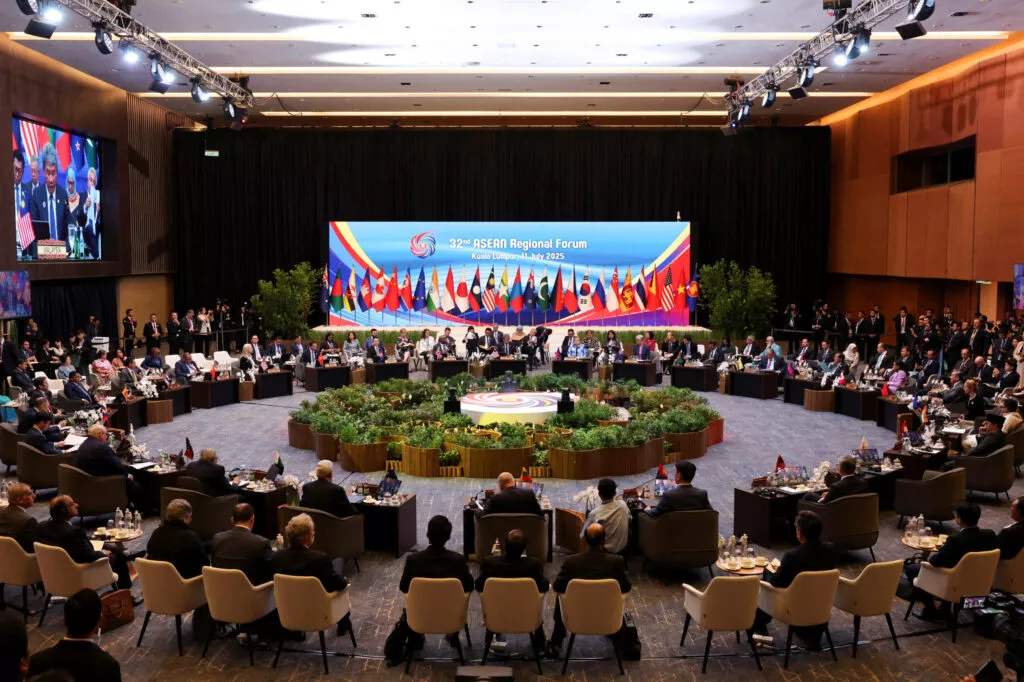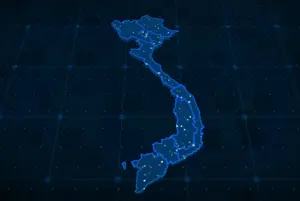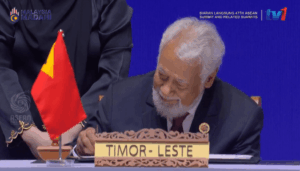ASEAN must help to fill the global leadership vacuum to protect its regional backyard
In a world of great power competition and global uncertainties, the litmus test for ASEAN’s survival is whether it can avoid being trampled when the geopolitical elephants fight. The challenge is becoming greater as the frontiers of competition multiply.
These changes challenge the rules-based multilateral system that underpins decades of ASEAN growth and development. The region is critically exposed to geoeconomic fracture and fragmentation, but through closer coordination ASEAN can mitigate the impact and take the lead in shaping future global governance. It can start by strengthening regional markets and realising the RCEP vision — doing so require bold actions.
Analysis shows the negative effects from US reciprocal tariffs on regional GDP, exports, investments and jobs. The negative effects increase if there is retaliation and broader protection. But if ASEAN deepens regional integration and fully implements the Regional Comprehensive Economic Partnership (RCEP) with its partners, it can turn the tide.
Addressing the impact of tariffs is ASEAN’s foremost priority. The impact of tariffs on the region varies, by level and by each country’s exposure to the US market which differs across sectors. A key concern to ASEAN is the threat of ‘transshipment’ penalties of 40 per cent on goods that seek to evade or fail to meet the rules of origin requirements. In absence of clarity on the rules or origin, business uncertainty abounds.
ASEAN’s enforcement of transshipment rules should neither hinder legitimate trade nor be discriminatory. The key will be to agree on a shared understanding on substantial transformation, and stronger customs cooperation on the issuance and verification of certificates of origin.
ASEAN should also advocate for more equitable treatment for its two least developed members, Lao PDR and Myanmar, which face a prohibitive 40 per cent tariff, and push for goods from the region to be treated as originating to avoid regional fragmentation.
The region must manage the risk of trade diversion as exporters from other countries redirect goods away from the US market. Safeguard mechanisms provide a legitimate way to address sudden surges, but their excessive or poorly coordinated use could trigger trade disruptions, increase costs for businesses and erode trust in ASEAN’s integration agenda.
ASEAN should consider developing guidelines to ensure WTO alignment in the use of trade remedy measures, while engaging partners to mitigate the risk of trade diversion by establishing consultation mechanisms and cooperation in monitoring the situation.
In the medium term, regional resilience will be strengthened by boosting domestic markets and expanding regional trade in ASEAN and with neighbours, starting with existing agreements. RCEP, the world’s largest free trade agreement that accounts for 30 per cent of global GDP and trade, provides the vehicle for doing that.
Both in ASEAN and in RCEP, ensuring diversified and resilient regional value chains requires addressing the challenges the private sector faces. Inputs from the private sector emphasise a key message: cross-border trade costs in the region have remained high despite the virtual elimination of tariffs. Behind-the-border barriers and onerous rules of origin requirements have hindered the goals of trade agreements. While businesses are adept at reorganising their supply chains and identifying new opportunities, they need ASEAN to deliver on its commitments and advance domestic reforms to deal with regulatory and market fragmentation.
The priorities identified by the private sector are largely aligned with existing ASEAN commitments, but accelerating them requires political will and clear ownership of domestic reforms to ensure effective implementation.
For example, in reviewing non-tariff measures ASEAN countries should utilise the guidelines and toolkit that have been adopted and be prepared to amend or even revoke NTMs that are not cost effective. Similarly, effective operationalisation of the ASEAN Single Window requires countries to invest in ensuring their National Single Window is interoperable.
ASEAN should also strengthen its capacity to navigate the growing economic security nexus. Beyond having a platform to discuss these issues, ASEAN should advance concrete initiatives to strengthen supply chain resilience in strategic sectors that are prone to weaponisation, starting with semiconductors and critical minerals. Consultation with industry players is an essential part of that process.
The current realities offer an opportunity for ASEAN to lead in realising the RCEP vision. The WTO-centred global multilateral trading system has provided the political and legal underpinnings for ASEAN’s economic progress. ASEAN now needs to defend and reform the system to make it fairer and more inclusive, beginning with making RCEP work.
RCEP is a powerful tool to expand and diversify supply chains and mitigate the impact of global trade uncertainties and fragmentation, but it needs broader utilisation. Targeted socialisation of RCEP can provide quick wins.
Bold action to accelerate tariff elimination, especially in strategic supply chains, address tariff differentials and improve rules of origin would boost supply chain diversification and increase RCEP utilisation — issues identified by the private sector as necessary to make the agreement work.
RCEP is a ‘living agreement’ with a built-in general review in 2027. This presents an opportunity to update commitments in line with ASEAN’s latest agreements and include key areas such as subsidies and overcapacity, supply chain resilience, and the digital and green agendas. RCEP can then serve as a stepping stone for building consensus in these areas towards future multilateralisation.
Finally, RCEP is too valuable a vision and framework to be turned into another pawn on the geopolitical chessboard. Only ASEAN can offer credible leadership of RCEP by adhering to its original objective of establishing a modern, comprehensive, high-quality and mutually beneficial economic partnership that expands regional trade and investment and reaches out globally.
The ASEAN Chair’s call for a fifth RCEP summit in October, the first since the signing of the Agreement, is a good start towards accelerating its implementation, monitoring its effectiveness and charting a bold way forward for ASEAN and the region.
Mari Pangestu was formerly Indonesia’s Minister of Trade and is currently President Prabowo Subianto’s Special Advisor for International Trade and Multilateral Cooperation.
Julia Tijaja is Associate Senior Fellow at the ASEAN Studies Centre, ISEAS–Yusof Ishak Institute, Singapore.
Source: East Asia Forum





